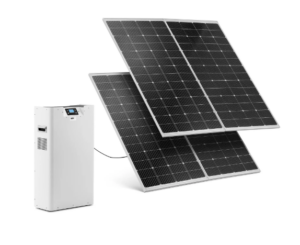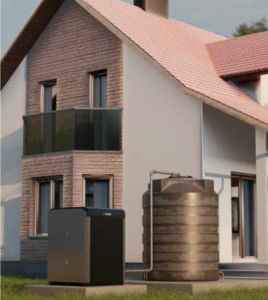Independency in household electric supply is reality. Is it possible with water supply?
In the developed world, we are witnessing a significant development of green energy production in relation to both industry and households. Thanks to solar, wind, water and so-called renewable energies from geothermal sources, significant market changes have also taken place in terms of use in the last decade. Just think of the rapid spread of electric heat pump heating systems or electric vehicles. In fact, electricity has become our most environmentally conscious energy source. Advanced photovoltaic systems are also becoming more common in households, which are capable of providing full, autonomous electrical supply to an entire household, including car charging.
 The spread of photovoltaic systems is encouraging thanks to state subsidies and people becoming environmentally conscious: solar panels are becoming more efficient and cheaper, battery capacities are improving, as a result of which achieving energy independence in electricity has become a reality for many in whole or in part. The process continues and it is estimated that 30 million European households could become energy independent by 2050 https://murciatoday.com/new-solar-technology-means-30m-homes-in-europe-could-be-energy-independent-by-2050_2279630-a.html.
The spread of photovoltaic systems is encouraging thanks to state subsidies and people becoming environmentally conscious: solar panels are becoming more efficient and cheaper, battery capacities are improving, as a result of which achieving energy independence in electricity has become a reality for many in whole or in part. The process continues and it is estimated that 30 million European households could become energy independent by 2050 https://murciatoday.com/new-solar-technology-means-30m-homes-in-europe-could-be-energy-independent-by-2050_2279630-a.html.
What about drinking water? The world’s already scarce freshwater resources are dwindling: at least 30% of Europe’s surface and groundwater resources are contaminated with never-degradable compounds (PFAS) that are dangerous to humans, and if that were not bad enough, global climate change is causing permanent or temporary water shortages in many places. You probably haven’t heard that there is a water technology that can partially provide a solution or at least help. It is estimated that the Earth’s atmosphere stores about 12-16 thousand km3 of water in a vapour state. 1 cubic meter of air consists of 4 to 25 grams of water vapor, depending on humidity. Even in dry zones, the air is usually humid enough to provide a source of water that can be directly tapped. This is true for the poorest and densest countries on Earth, but revolutionary technology has grown in the USA, Israel and China due to financial opportunities. Current atmospheric water generator (AWG) technologies can theoretically condense an average of about 20-30% of air vapour into drinking water.
 But can we, as European citizens, be independent when it comes to drinking water? Yes, with your own atmospheric water generator device! And if you use your own solar electricity – you can even provide your family with healthy drinking water free of harmful pollution from an endless source in the sky (more information: https://awgeurope.com ). In most parts of the world, drinking water suppliers and mineral water distributors are profit-hungry multinationals. Unfortunately, this world is not about them worrying about our health. Unfortunately or fortunately, at least some of us have the opportunity to become independent of them, thanks to new technologies developed by engineers!
But can we, as European citizens, be independent when it comes to drinking water? Yes, with your own atmospheric water generator device! And if you use your own solar electricity – you can even provide your family with healthy drinking water free of harmful pollution from an endless source in the sky (more information: https://awgeurope.com ). In most parts of the world, drinking water suppliers and mineral water distributors are profit-hungry multinationals. Unfortunately, this world is not about them worrying about our health. Unfortunately or fortunately, at least some of us have the opportunity to become independent of them, thanks to new technologies developed by engineers!
